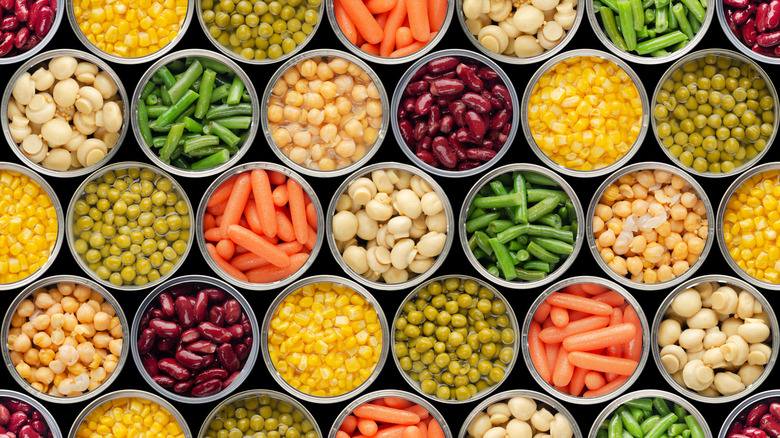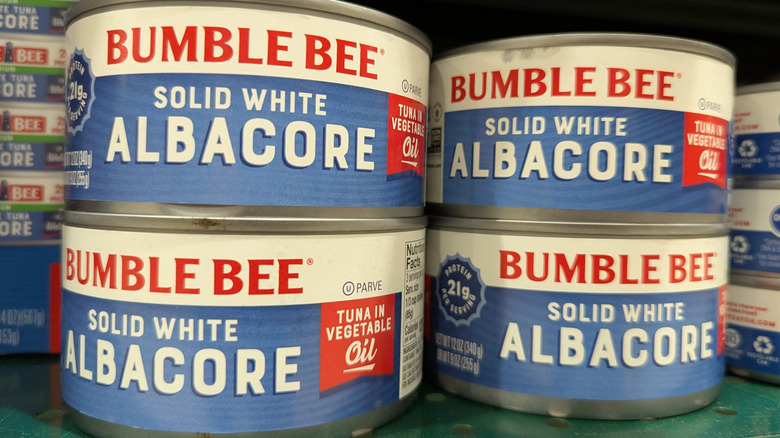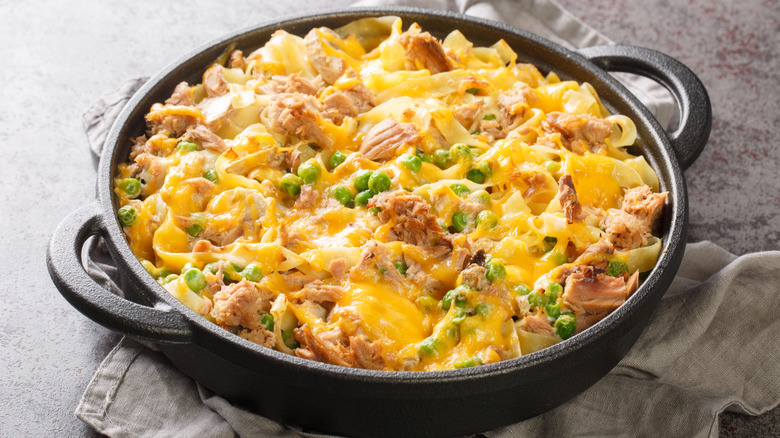The #1 Canned Food You Should Buy Before Prices Go Up
Nothing lasts forever, and most food lasts for even less. Americans lose a shocking amount of money on uneaten food every year, and while there may not be a fullproof way to completely avoid the occasional bag of produce being forgotten in the back of the fridge, there is one grocery shopping strategy that can help you stretch your food shelf life and savings: buying canned food.
Since the dawn of the 20th century, Americans have bought cans of everything from soup to nuts, quite literally. Inexpensive, long-lasting cans of food can make a big nutritional difference without making a big dent in food budgets — at least, until now. While U.S. consumers haven't had to significantly worry about the budgetary impact of tariffs for about a century, 2025 tariffs are likely to make U.S. shoppers feel as constrained as they were after the Smoot-Hawley Tariff Act of 1930 — which is largely credited with deepening the Great Depression.
While stockpiling canned food in fear of price hikes might sound like it's right out of the Great Depression-era playbook, it also might not be a bad idea. Chances are, the world tuna trade hasn't been top of mind for U.S. shoppers lately, but maybe it should. Due to trade war tensions, prices for the canned fish are due to rise, and availability may soon become scarce. Whether you love a good scoop of tuna salad or simply some can-shaped semblance of control, you might want to consider devoting that free shelf in your pantry to tuna.
Tariffs on canned tuna
The shifting nature of President Donald Trump's tariffs — and their complicated geopolitical and economic impacts — have made for choppy seas in the global seafood trade. This uncertainty has left seafood markets and supply chain stakeholders swimming for their lives, which could soon impact prices.
While the U.S. has multiple domestic commercial tuna fisheries, the country also sources tuna from other countries. Imported tuna is subject to price adjustments due to tariff-rate quotas established long before Trump's new tariff announcements. But it isn't just the tuna facing potential increased costs, and decreased availability, due to tariffs. Even if the actual tuna fish inside of a can isn't technically under tariff, the price can be affected by other factors. Everything from the oil that tuna is packed in to the packaging tuna is sealed in (including aluminum, cardboard, and plastic wrap) may all come from different countries — thereby subject to different tariffs. Even U.S.-caught tuna is often outsourced to other countries with cheaper labor available for cleaning, packing, and canning, before being shipped back to the U.S. for finishing touches and final sale.
One intended purpose of Trump's tariffs is to protect U.S. businesses from imported competition. However, every point along the complex canned tuna supply chain could be strained as suppliers, distributors, and even customers navigate changes in the market caused by tariffs and their resulting tensions. Not to mention how shifting sources might affect issues like overfishing and ecological strain.
Consider your tuna tastes before shopping
Tinned tuna is immensely versatile. Since the 1900s, fishermen have called the mildly flavored high-protein albacore tuna "chicken of the sea" — the concept has stuck so thoroughly, there is even a prominent canned tuna brand of the same name. Of course, not all canned tuna tastes the same, and you can ultimately save money and hassle by considering your own tuna tastes before panic shopping.
Albacore, or "white" tuna, is mild and perhaps easily whipped up into tuna noodle casseroles that will please a variety of palates, while skipjack tuna is briny and seafood-flavor-forward. "Light" usually describes skipjack tuna, but can also be applied to a mix of other sweeter and/or meatier-tasting varieties, like bigeye tuna, yellowfin, or tongol. Tuna packed in water will be less boldly flavorful than tuna packed in oil. While the fat in oil helps bring out tuna's flavor and can make it the ideal choice when eating tuna on its own or paired with simple sides, water-packed tuna may be the milder choice for a wider variety of recipes in which tuna plays a part.
Wherever you stock up on tuna, be sure to check unit pricing when shopping to ensure you get the best deal on your canned tuna of choice — especially as prices rise. You can also further stretch savings by teaming up with neighbors, friends, or family to split bulk packages of canned tuna from warehouse stores.


